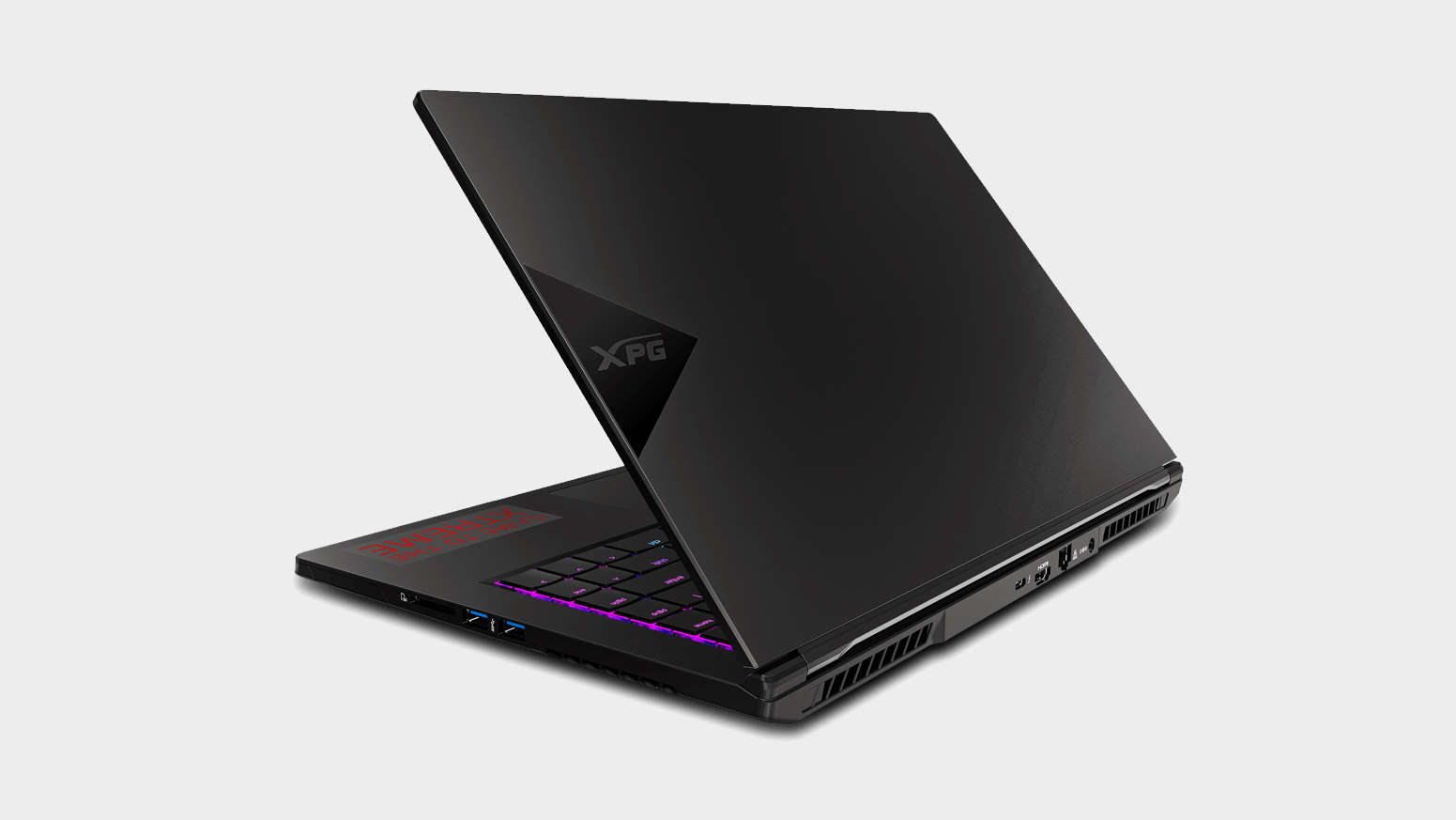Our Verdict
The GPU may seem like a weakpoint, but the rest of the Xenia's specs list is jam-packed with hit after hit of quality components.
For
- Impressive specs list
- Unprecedented gaming battery life
Against
- Weak GPU for the money
PC Gamer's got your back
Adata's not the first name to come to mind when you're thinking about bagging a new gaming laptop. But the XPG Xenia 15 is a surprisingly impressive debut from a company known more for its storage and memory than its full machines. To suggest that any success is surprising might seem a little uncharitable… unless you watched the bizarre car-crash moment that was the Xenia announcement video.
Screen size - 15.6-inch IPS
Native resolution - 1920 x 1080
Refresh rate - 144Hz
CPU - Intel Core i7 9750H
Graphics card - Nvidia GTX 1660 Ti
Memory - 32GB DDR4
Memory speed - 2,666MHz
Storage - 1TB Adata SX8200 Pro SSD
Weight - <1.85kg | 4lbs
Extras - Mechanical keyboard
It's still on YouTube if you want 16mins of uncomfortable viewing, where "tech and gaming analyst" (and definitely not a made-up human), Mike Lan, questions why Adata is bothering, asking whether it's being "arrogant or just plain foolish", and flat-out states that "XPG's gonna flop, and it's going to be a sad, sad sight."
That's how Adata decided to showcase its first ever gaming laptop.
I couldn't work out whether we were all being trolled by Adata, and that feeling was only compounded when I received the box supposedly containing the XPG Xenia 15 laptop in the post. The packaging felt rather lightweight and I figured I might just open it up to find an SSD, a couple sticks of RAM, and a note proclaiming that of course Adata was just going to stick to what it's good at.
But no, inside lay the svelte XPG Xenia 15, a sleek black notebook with a subtle style the company is not necessarily known for. The XPG branding on the lid is black-on-black, as the negative space inside a shiny arrow, and it genuinely wouldn't look out of place in a boardroom or lecture hall.
If you want the pretties, however, they are there. The low-profile mechanical switch keyboard is inevitably offered with per-key RGB illumination, and there's a light strip on the front, just below the wide, responsive trackpad, with more customisable RGB LEDs for your pleasure too.
Yes, that's right, a mechanical switch keyboard.
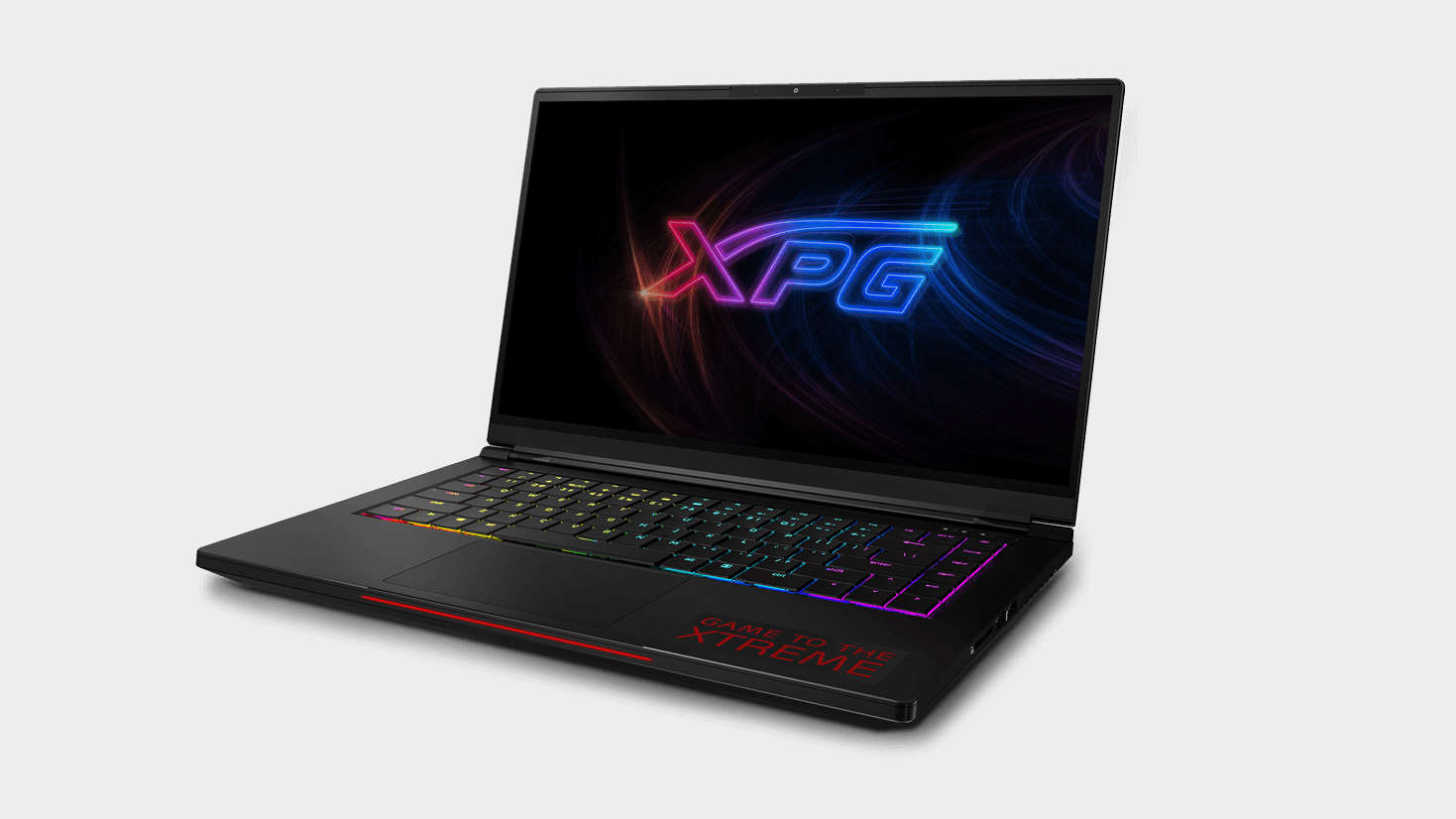
It's not something you'll find on many gaming laptops, but Adata has set out its stall with the Xenia to try and deliver an impressive specs list with features you might not expect from a $1,500 laptop. With one notable exception… the graphics card.
I'm going to get it out of the way early, my biggest disappointment with the XPG Xenia 15 is the fact that the mainstream version with a Nvidia GTX 1660 Ti inside it costs $1,500. That's a lot of money for a 1660 Ti gaming laptop, where normally you'll find that sort of GPU sitting in machines, from the likes of Acer and MSI, for around $1,200. But while that is the primary component of desire for a PC gamer, that's not telling the full story, and you get a whole lot of laptop for that cash once you get over the GPU.
The fact it's using Intel 9th Gen chips doesn't concern me. Despite the fact that the Core i7 10750H has now been released, it barely offers anything above the similarly six-core, 12-thread Core i7 9750H Adata has dropped into the Xenia 15.
Adata explained to me that because Comet Lake was on the same process, and most game engines don't take full advantage of multiple CPU cores, it was comfortable sticking to the existing 9th Gen offerings from Intel. It also mentioned that supply-chain constraints were a factor too, and meant Adata could focus future R&D efforts on the coming Tiger Lake platform.
The 9750H is still a quality gaming laptop processor, which might not have the raw multithreaded grunt of an AMD Ryzen 4800H, but does still deliver in the gaming performance figures.
Making those games shine is the 1080p IPS display, running at 144Hz. And though I've noted my disappointment with the value proposition of the GTX 1660 Ti it is still a great 1080p gaming GPU. There's also plenty of space to store your games library on the go with 1TB of NVMe SSD storage, in the shape of Adata's own SX8200 Pro drive. It's also seen fit to kit the Xenia 15 out with a massive 32GB of 2,666MHz DDR4 memory. That may not be the quickest, but there's a hell of a lot of it to go around.
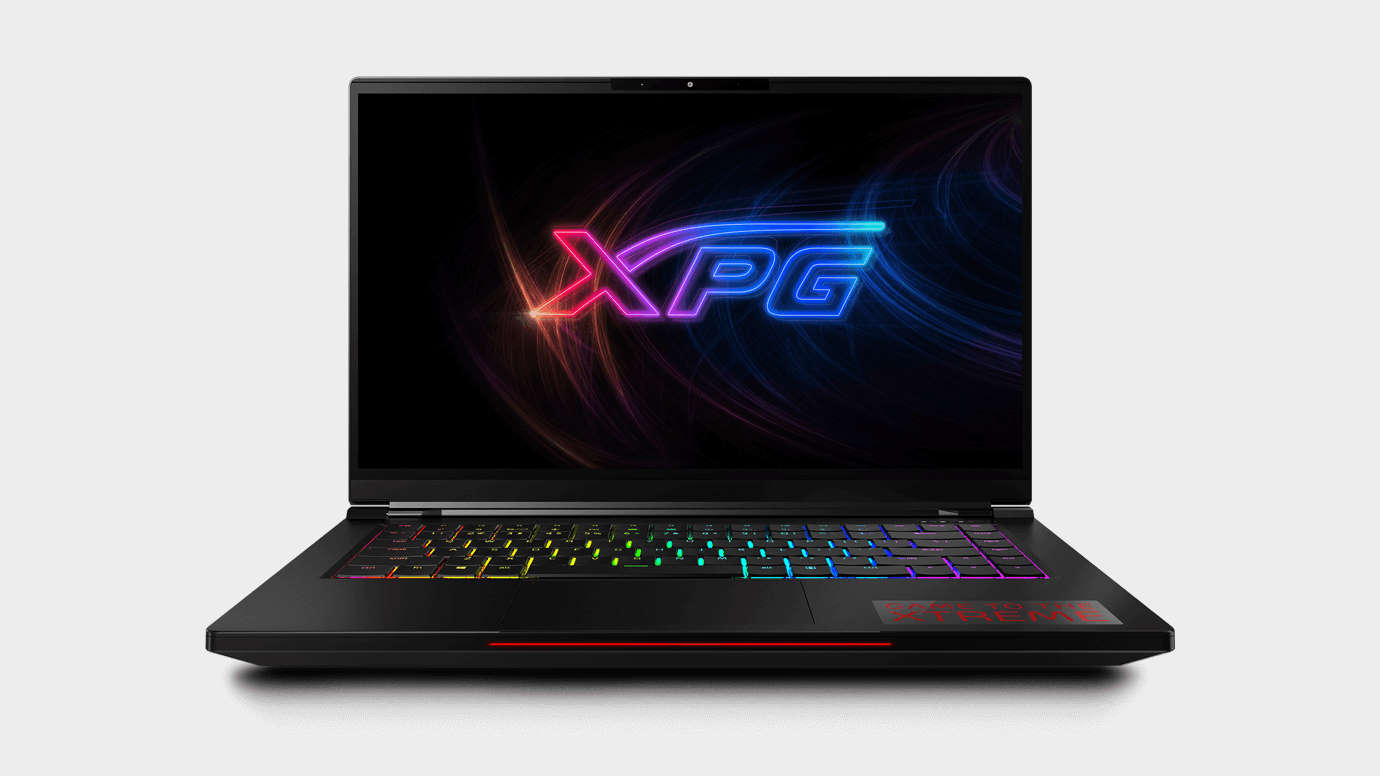

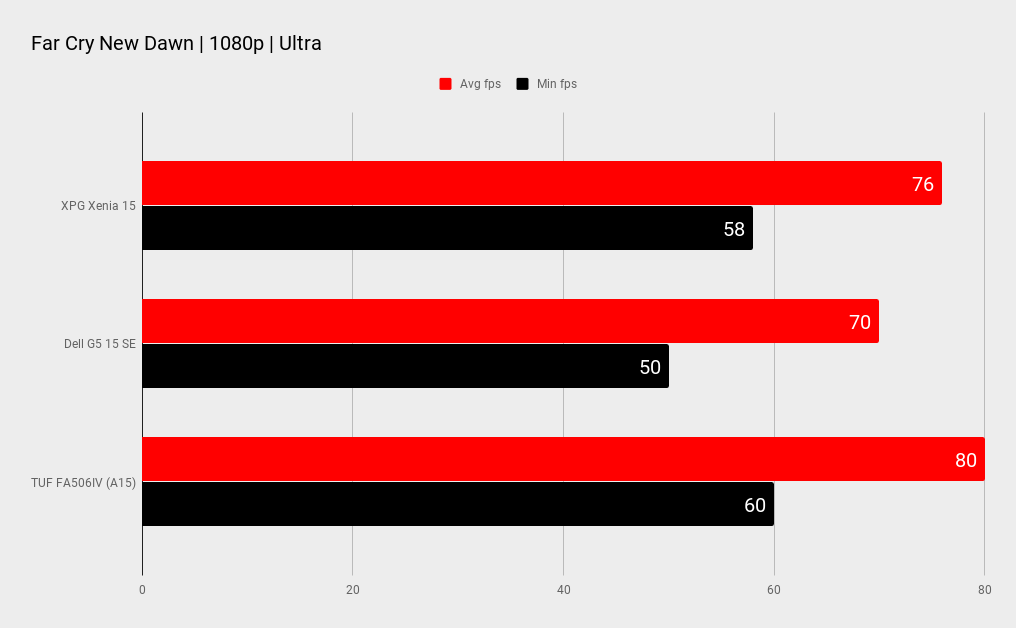
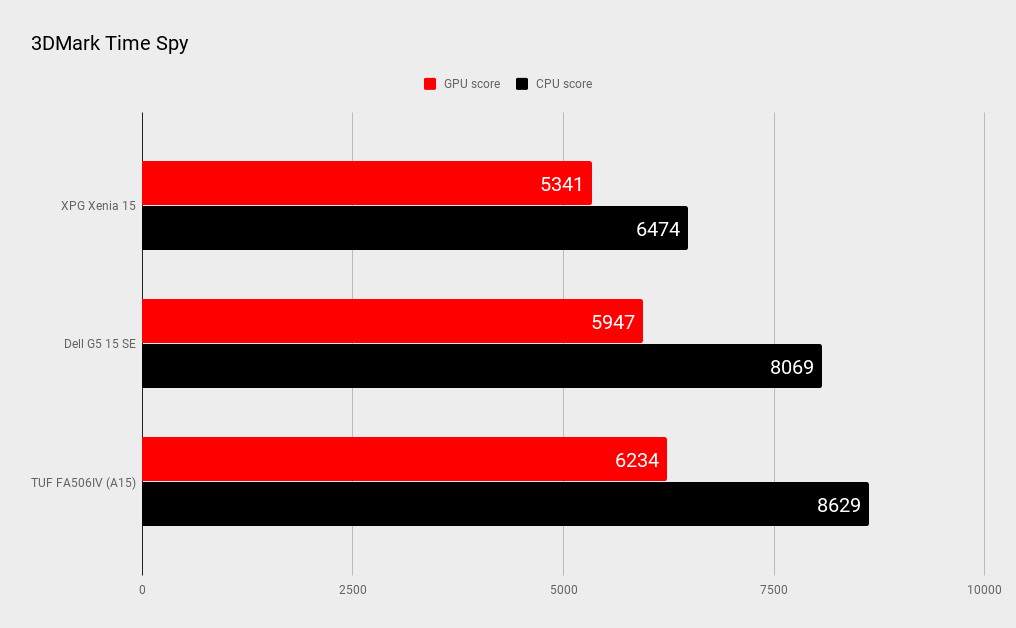
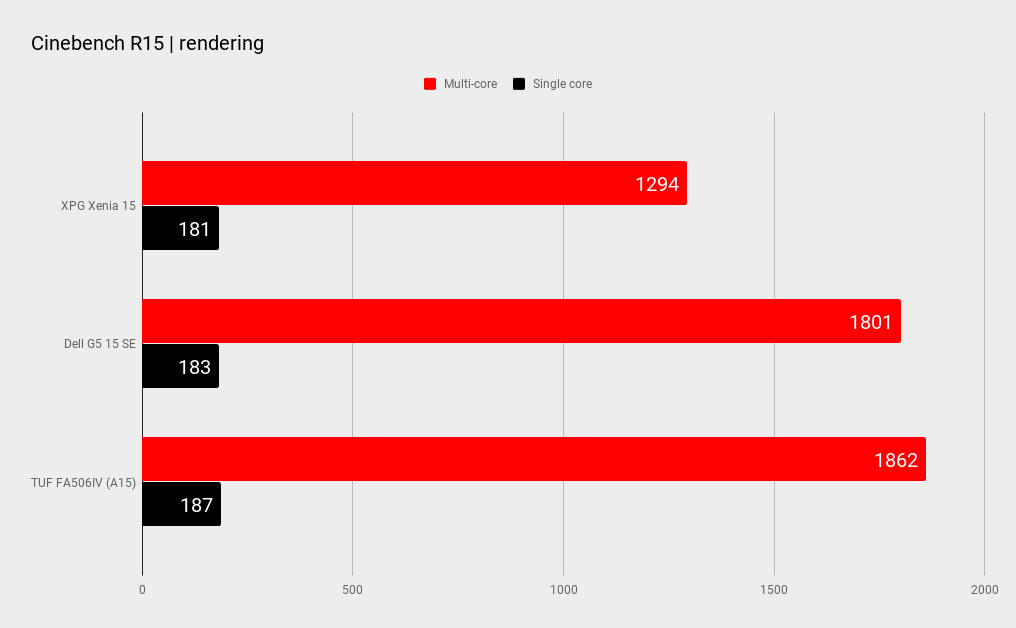

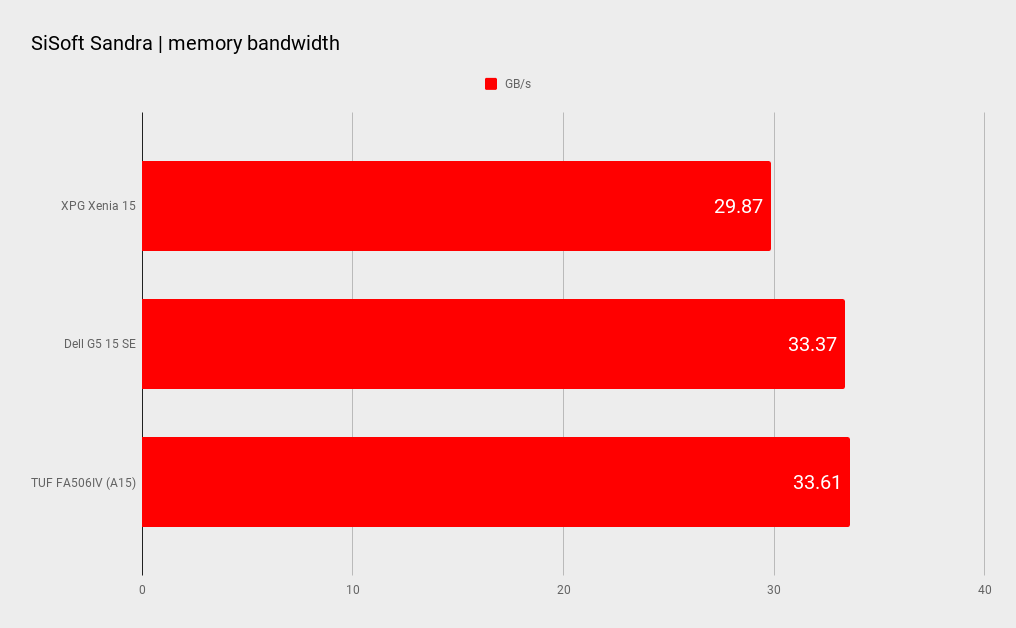
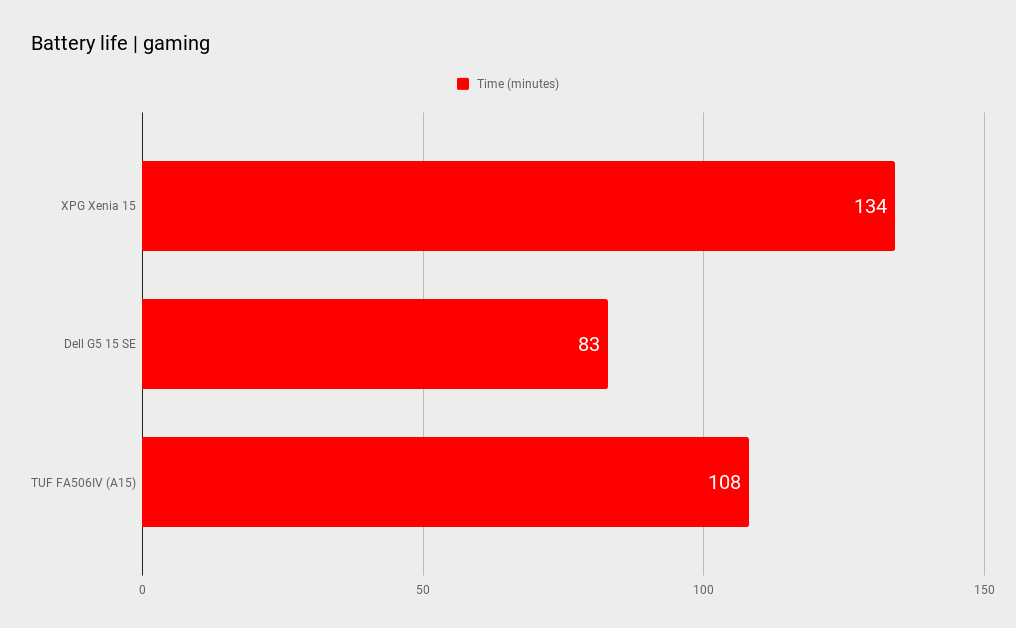
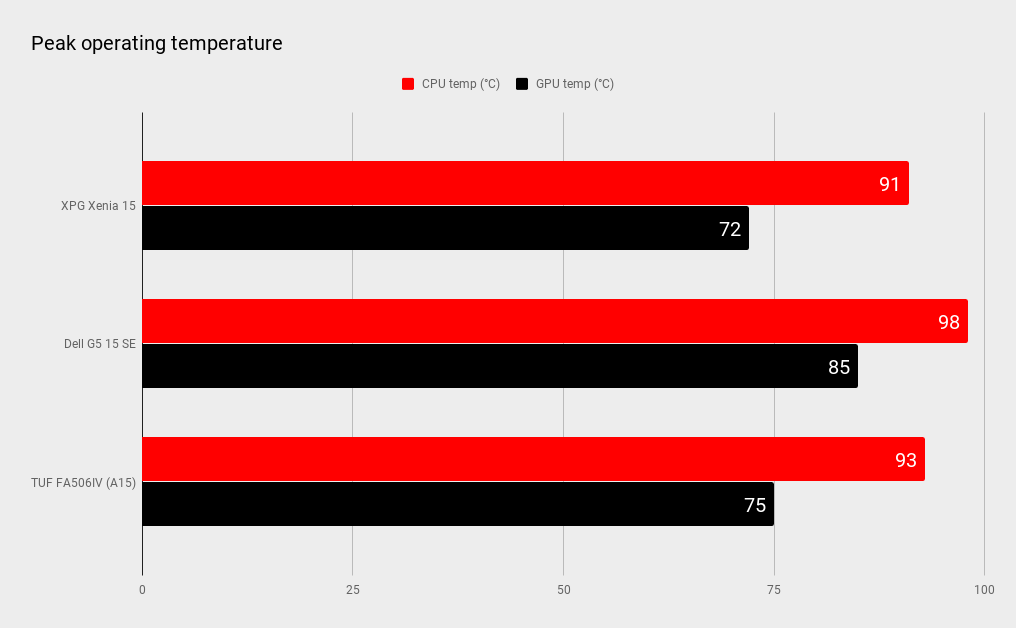
Throw in a battery life that tops the two hour mark when gaming—and not just in day-to-day productivity tasks—and that price point starts to look a little better value. Like I said, a whole lot of laptop.
The benchmarks show it's a little off the gaming and CPU pace of the two $1,200 and $1,300 AMD-powered machines from Dell and Asus respectively, but those machines have their own problems too. As much as we love the new all-AMD Dell G5 15 SE, it's gaming performance sometimes beats, sometimes loses out against the Xenia, and the Asus TUF A15 isn't exactly smashing the Adata machine either.
They're also two machines that run a fair bit hotter than the magnesium alloy chassis Adata has clothed the XPG Xenia 15 in. They also don't have the rest of the specs list of this debut laptop either.
There is a lot to like about this new range of XPG gaming laptops. It has tried to keep things simple; aiming for a subtle design, excellent gaming battery life, and a specs list you'd be hard pressed to find in other machines at this price. The GPU itself might initially seem like it's letting the side down, but still punches impressively well at this level. There is an Adata XPG Xenia 15 with the RTX 2070 Max-Q Design graphics card inside it, with the same essential specs list, but at $2,000 that's another $500 to deliver just that higher-class GPU.
I'm far more comfortable recommending the XPG Xenia 15 at this price point. I didn't expect to be so pleasantly surprised by Adata's first stab at the gaming laptop market and I certainly hope that it's not gonna flop. Not least so 'Mike Lan' — if that even is your name — has to eat his words, but also because, with the design ethos behind it, Adata deserves to do well with this excellent little machine.
The GPU may seem like a weakpoint, but the rest of the Xenia's specs list is jam-packed with hit after hit of quality components.

Dave has been gaming since the days of Zaxxon and Lady Bug on the Colecovision, and code books for the Commodore Vic 20 (Death Race 2000!). He built his first gaming PC at the tender age of 16, and finally finished bug-fixing the Cyrix-based system around a year later. When he dropped it out of the window. He first started writing for Official PlayStation Magazine and Xbox World many decades ago, then moved onto PC Format full-time, then PC Gamer, TechRadar, and T3 among others. Now he's back, writing about the nightmarish graphics card market, CPUs with more cores than sense, gaming laptops hotter than the sun, and SSDs more capacious than a Cybertruck.
